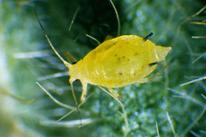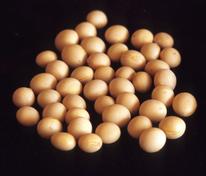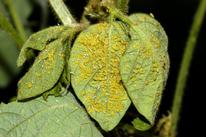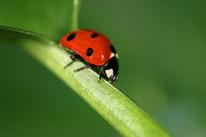By Jill Sackett Eberhart
Edited by Kristine Moncada, Craig Sheaffer, Gigi DiGiacomo, and Nicole Tautges
Steve Judson’s* grandparents bought their east central Minnesota farm in the early 1940s. He was a fixture at the farm most summers while growing up. During those summers, Steve learned to appreciate agriculture and the outdoors. It wasn’t much of a surprise when not long after school, Steve moved to Wisconsin and began farming. Steve and his business partner raised dairy cows and crops throughout the 1980s, but eventually the family farm drew Steve back to Minnesota.
For the first ten or so years that Steve farmed the family land, he did not practice organic agriculture and farmed conventionally. During those years, glyphosate resistant crop technology (Roundup Ready crops) became an option for soybeans. The technology and claims around glyphosate-resistant soybeans intrigued Steve. Genetic engineering had allowed researchers to develop a soybean breeding line that was resistant to the herbicide glyphosate; the soybeans and weeds in a field could be sprayed with glyphosate, but only the weeds would be affected.
Steve decided to give glyphosate a try. However, not long after Steve’s first foray into genetically engineered soybeans, he made the decision to stop growing genetically engineered crops completely. He wanted to get back to growing ‘real food’ on his farm and started extending his rotation beyond just corn and soybeans. He was also concerned about the increasing use of synthetic chemicals in grain crop agriculture. Much of his management plan for the next five years adhered to the requirements for organic certification. Furthermore, Steve was genuinely concerned about health issues he was experiencing and decided to make further changes to his farm management plan. Soon after, Steve had his farm certified as organic.
New Opportunities, New Risks
About eight years after Steve’s farm became certified organic, one of the seed companies from which Steve regularly bought told him they would be willing to pay a premium to farmers who would contract to grow soybean seed for them. Steve had thus far avoided growing soybeans organically, as he was concerned about soybean pests, such as soybean aphid, brown stem rot, soybean rust, and weed pressure – all of which can make soybeans especially difficult to manage in an organic system. Plus, Steve hadn’t thought that the market prices were quite good enough to warrant the risk. His concern was that a difficult year with soybean pests might reduce the yields so much that even organic premiums wouldn’t be enough to offset the losses.
However, the good price offered by the seed company had Steve’s attention. The soybean option also made him reconsider his current rotation. If he included soybeans in his rotation, it would open up an opportunity to plant a cover crop after the soybean harvest.
Cover crops are good at decreasing soil erosion, particularly during winter and early spring. The cover crop, if it included a grass, could help increase soil organic matter. And, if the cover crop included legumes, it could provide nitrogen for the next cash crop. Not to mention the fact that soybeans themselves are legumes and do not require added nitrogen and even provide some for the next cash crop. Soil organic matter and nitrogen are important considerations for organic farmers. With these ideas in mind, Steve overcame his concerns about producing soybeans. He signed a contract with the seed company and began growing certified organic soybeans.
Controlling Soybean Aphid
Steve had grown soybeans prior to his organic certification and he had experience with organic pest management in other crops. He prepared to grow soybeans again by making planting, tillage, and weed management decisions that would contribute to soybean pest and weed control. These included such things as managing early-emerging weeds and having a solid weed cultivation plan. Steve’s farm also already had natural areas and perennial crops that could attract beneficial insects to the farm. He knew, though, that there would be a very good chance that each time he grew soybeans he’d be battling soybean aphid.
Soybean aphids are found in every county of Minnesota. They overwinter on common buckthorn, which is an invasive shrub from Asia found throughout the state. Aphids feed on the plant’s sugars, which stresses the soybean plants and may result in reduced yields due to poor plant growth and/or pod set. In addition, plant damage from soybean aphids can aid in transmitting diseases, which also can decrease yield.
Soybean growers need to scout their fields regularly for soybean aphid infestations. The economic threshold (the number of aphids per plant that a soybean field can manage without significant decrease in yield) for non-organic soybean growers is 250 aphids per plant on 80% of the field. Non-organic farmers can then spray a synthetic insecticide to kill the soybean aphids if infestations exceed this level.
While organic growers are prohibited from spraying insecticides, they do have options for managing soybean aphids, including planting resistant varieties, exploiting biological controls, and applying organic-approved insecticides. Most organic producers utilize pest-resistant varieties when available. However, in northern areas like Minnesota, there are very few aphid-resistant varieties available. Additionally, producers who grow soybeans under contract do not get to choose which variety is grown.
Another management option is to use biological controls that include naturally-occurring or introduced predators of the soybean aphids. Any natural or perennial areas of a farm may act as host to these beneficial predatory insects such as the lacewing or lady beetle. Asian lady beetles that target soybean aphids are available commercially, although there is some concern about their effectiveness at a field scale. A soybean field, for instance, would require a large amount of lady beetles and proper distribution may be difficult. Researchers are working on breeding parasitic wasps, a biological control of aphids in Asia, for commercial use, but none are currently available to producers.
A third pest management option is the use of insecticidal sprays that are approved for organic soybean growers. These include compost teas, insecticidal soaps, and naturally-derived insecticides. These sprays, however, are not as effective as conventional products and have shown varying results on-farm. Waiting until the aphid infestation reaches 250 aphids per plant (the non-organic recommendation) has often resulted in no suppression, and some have suggested a threshold of 100 aphids per plant to compensate for the differences in effectiveness of organic products. Unfortunately, naturally-derived insecticides can affect not only the target pest insect, but also beneficial insects.
Clearly, soybean aphid management options are available to organic soybean producers, but none of them have thus far provided consistent aphid control or suppression. However, there are many organic farmers in the region that successfully produce soybeans with profitable yields.
It came as no surprise to Steve when there was a summer day during his first year of growing soybeans organically that he saw aphids in his field. Unfortunately, the soybeans he was growing for the seed company were not a variety that was resistant to aphids. The infestation level was low at that point, but Steve knew he had to make a decision quickly regarding what management method to use.
If he waited and the soybean aphid population didn’t increase, he might be able to get by with doing nothing. But, if the aphid population increased, yields and revenue might suffer significantly. Should he go with one of the approved insecticidal sprays? He’d had experience with some of them, but was never very impressed with their effectiveness, and would it be cost effective if he had to do more than one spray application? Should he try a biological control? He had used lady beetles some years earlier on a similar infestation in his alfalfa, but could he get enough of them for an entire field? He needed to weigh their effectiveness against their cost. An organic insecticidal spray such as Pyganic would cost up about $4,000 for two rounds of application, while the lady beetles would cost around $400. The aphid population could explode quickly; a decision needed to be made now! What should Steve do?
* While this case describes actual situations, names have been changed to protect the identity of participants.
Access the complete decision case study with all educational materials (pdf) >>>
You may cite this publication as:
Eberhart, J. 2017. Saying "Yes" to Raising Organic Soybeans. A Decision Case Study in Principles for Transitioning to Organic Farming: e-Learning Materials and Decision Case Studies for Educators. K. Moncada, C. Sheaffer, G. DiGiacomo, and N. Tautges (Eds).University of Minnesota, St. Paul, MN.



